#hikimayu
Text
Inspiration for SPOP Glimmer's design
To start out, the overall design of SPOP Glimmer is quite similar to her Filmation counterpart:

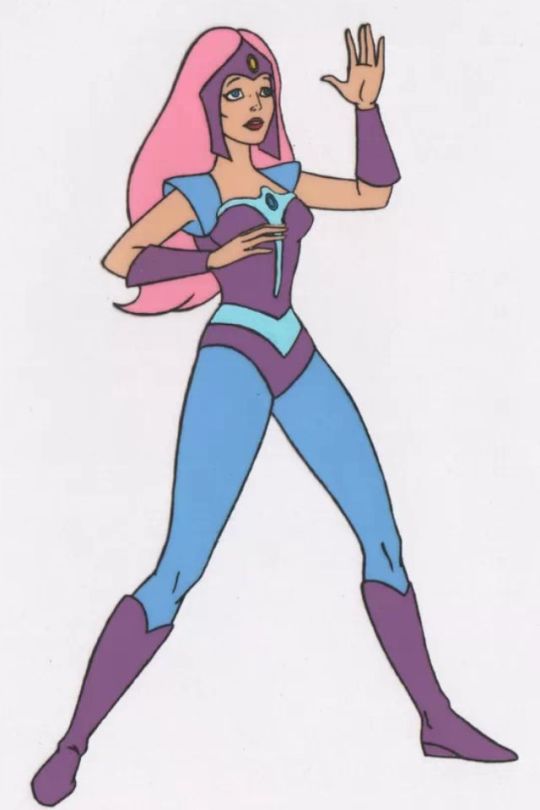
Her design is also probably inspired by Filmation concept art of Glimmer, as seen in the Filmation She-Ra series bible:

There are other influenced from the series bible, that didn't make into the series proper, like Glimmer being a teen:
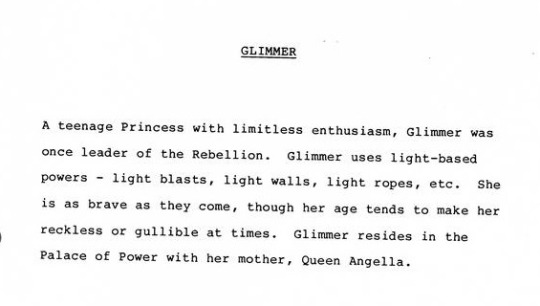
As well some elements of her personality:
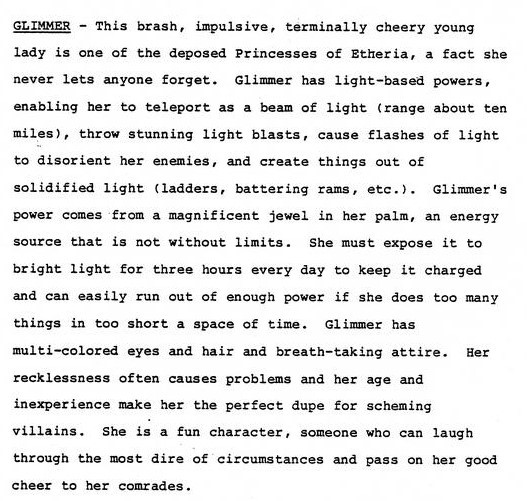
Indeed, it also presents the idea Glimmer has multi-colored hair, like she has in SPOP. Of course, Filmation Glimmer also was quite similar to this description, but Filmation and SPOP Glimmer also have similarities in terms of personality, and even stroylines.
Glimmer's staff (in SPOP originally Micah's) is also something she had as a toy and in comics and books:
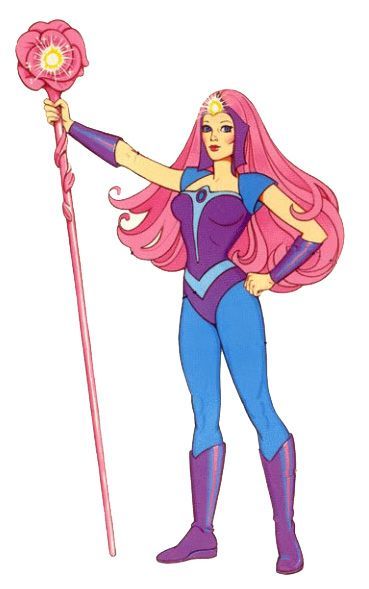

Justine Dantzer's (the creator of the most prototypical versions of She-Ra cast) very original design of Glimmer, was another possible influence - having wing-like cape (like SPOP Glimmer's cape resembles folded bird wings), or folded angel-wings (also connecting to Glimmer's angel-wings birth mark, and temporary wings she got when she assumed the role of the Queen, and full power of the Moonstone in "The Coronation") (you know, aside from being Angella's daughter), shoes with wings, and an asymmetrical motive:

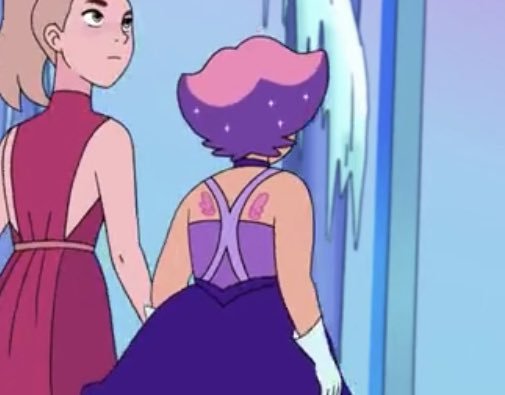

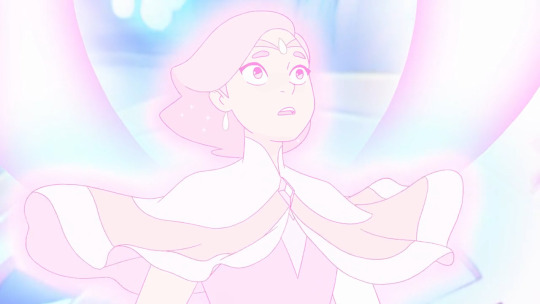
(it also seems Justine Dantzer's design for Glimmer was split into Glimmer and Queen Angella)
Glimmer's hair is interesting, as it has influences outside Filmation and MOTU.
Specifically, Glimmer's hairstyle for first 3 seasons, is based on that of Cutie Honey:

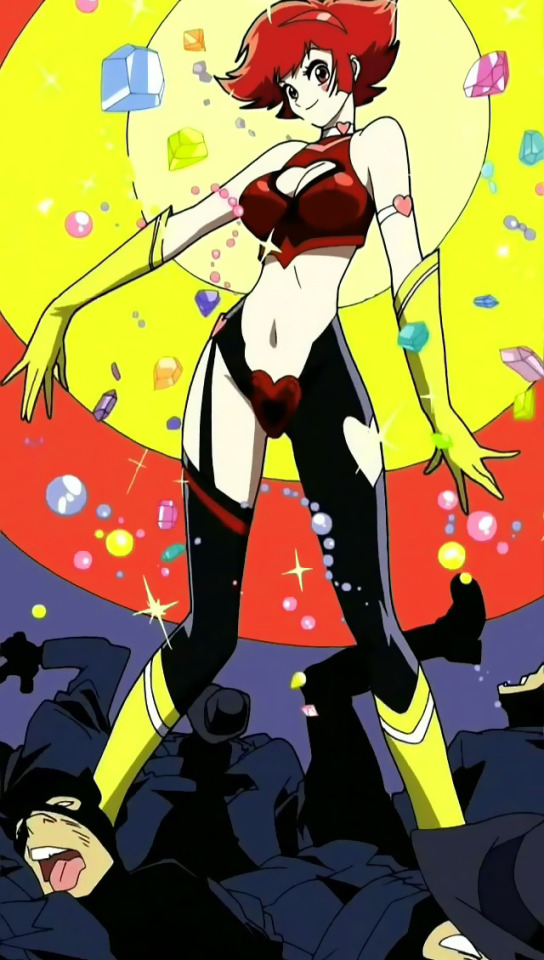
This was even further referenced in Glimmer's fantasy in "Roll with It", were she imagines herself as Cutie Honey-like heroine:


(It also confirms Glimmer is an Etherian equivalent of weeb XD)
Glimmer's (as does Queen Angella's) hair also have further inspiration and symbolism - they resemble the sky during dawn:
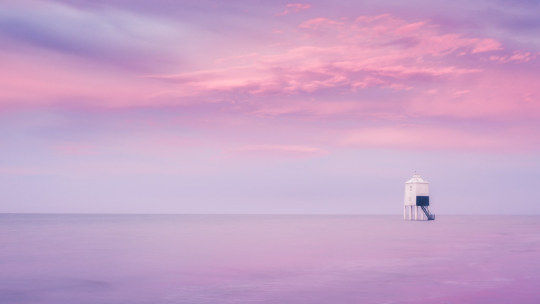

The fact Glimmer has stars in the purple part of her hair, while Angella doesn't, also signifies that during Angella rule, the stars were absent from Etheria's sky, while Glimmer, if accidentally, "returned the stars" during her rule as queen, and they stayed that way.
Glimmer's short eyebrows, also probably reference the Japanese Hikimayu tradition/fashion among the Japanese royal court and latter female (and sometimes male) aristocrats in general, of shaving or plucking natural eyebrows, and painting shorter, rounder ones :
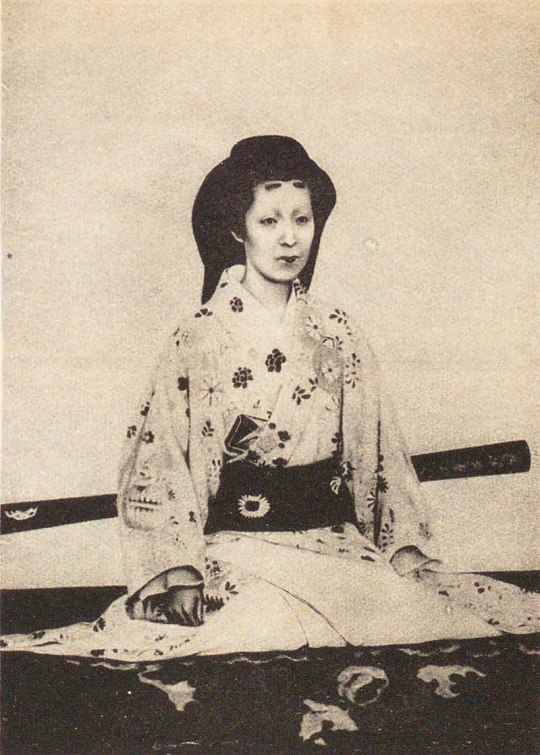
This is probably to emphasize Glimmer's (Etherian Equivalent) of East Asian descent from Micah. This also present often in design of characters in anime, particularly of some level of noble or royal descent:
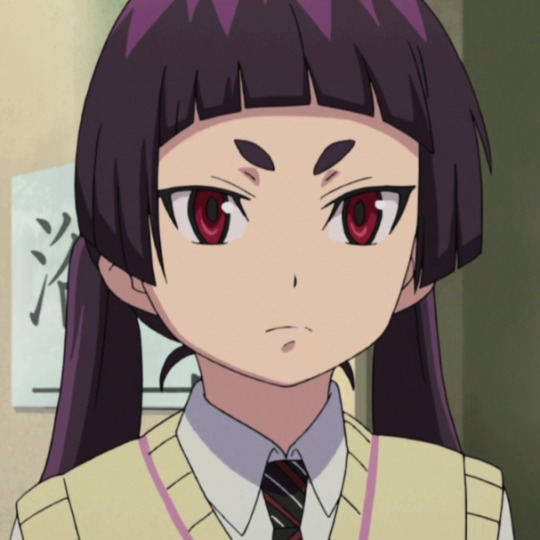
Izumo Kamiki from Blue Exorcist


Kaguya Ōtsutsuki and Momoshiki Ōtsutsuki from Naruto and Boruto.
Glimmer's design in seasons 4 and 5, is also intentionally closer to her Filmation design, but also resembles Nate Stevenson's initial design for Glimmer:
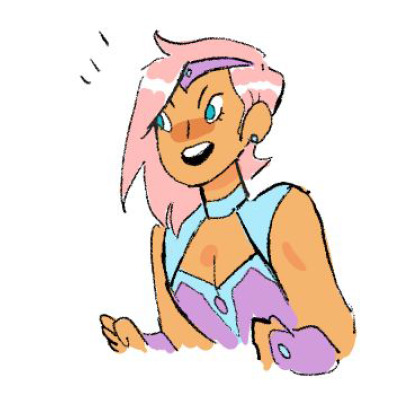

#glimmer#spop#she ra and the princesses of power#classic she ra#filmation she ra#filmation#shera#she ra#she-ra#cutie honey#hikimayu#masters of the universe#motu#concept art
113 notes
·
View notes
Photo

MODEL ➙ @ir.i.re
MODEL ➙ @solomondoom
3 notes
·
View notes
Text
The history in fiction: Parallels between historical Japan and the Narutoverse
Part 1: The era of the Six Paths
Naruto may not be a historical fiction and most people will think that the utmost historical reference in the series is the fact that ninja were a thing in feudal Japan. But what if I told you that there is an insane amount of historical parallels in the series? That we could actually place the events of the main timeline within real periods of Japanese history? In this two-part series, I’ll be explaining the many parallels, references and design inspirations of the main events and generations that shaped the course of the series that we all know and love. I’ll start with the era of the Six Paths (starting from Kaguya and ending with Indra and Ashura), and part 2 will be about the Warring States (dynamic between the Senju and Uchiha). At the end of each part, I’ll add useful links so that you can deepen your investigation and see my sources. Without further ado, let’s start overanalyzing.
Historical references and parallels in character design and dynamics
I’d place this particular era of the Narutoverse in the Heian period of Japan (or at least the most important people, the brothers Indra and Ashura). Considering that we’re spanning 3 generations here, I’ll separate the individuals involved in the following way:
Kaguya: End of Nara period (710 AD - 784 AD)
Hagoromo and Hamura: Early Heian period (794 AD - 1185 AD)
Indra and Ashura: Heian period (794 AD - 1185 AD)
Kaguya
On a side note, I’d like to add that I’m not really considering Tenji in the list above because he’s an anime only character. However, his case caught my eye so I’ll discuss him as well. Let’s start by evaluating Kaguya and Tenji then. Kaguya’s character design is a very classical archetype of Heian beauty standards and clothing. Long, straight hair with flowy kimono and a delicate face. Her unusual eyebrows are no coincidence as well, as in the Heian period the practice of hikimayu was commonplace in noblewomen.
"Hiki means "pull" and mayu means "eyebrows". Aristocratic women used to pluck or shave their eyebrows and paint new ones using a powdered ink called haizumi, which was made of soot from sesame or rapeseed oils." (source)

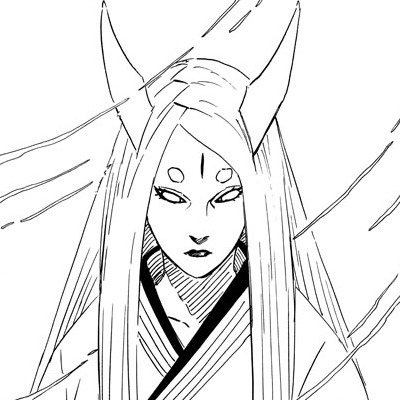
Left: Filler anime episode // Right: Manga panel

Above: Hikimayu through the ages of Japan
Another interesting fact that I’d like to point out is that Kaguya is a character with striking similarity to a Japanese folk tale, in this case the Tale of Princess Kaguya (Kaguyahime no monogatari), whose origin we can trace back to Heian Japan. The Tale of Princess Kaguya tells the story of a little baby girl who “fell from the skies” and was found by a couple of old farmers inside of a bamboo. She grew up to be extremely beautiful and was courted by lots of noblemen, but she rejected them all insisting that somebody would come for her, as she looked at the moon. Of course, Naruto provides us with a different ending to the story but this similarity can’t be overlooked.
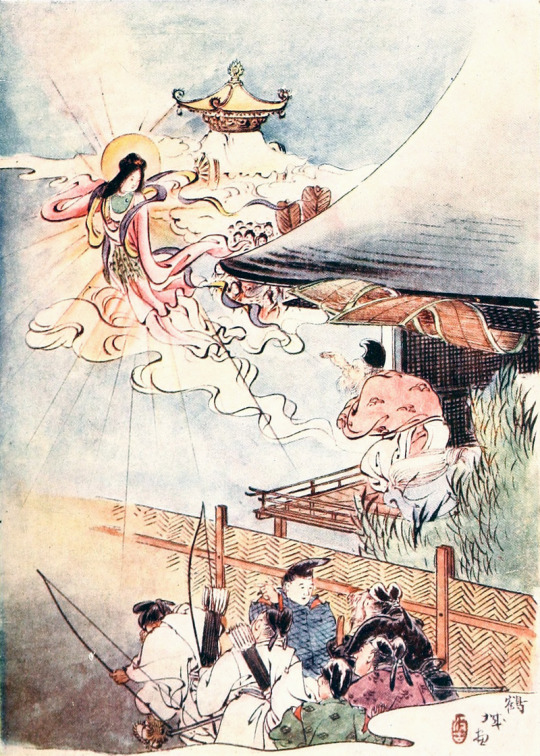
Above: "The Receding Princess" from The Japanese Fairy Book, 1908
Moving on to Tenji, it gets a bit more complicated to place him in an exact historical moment as he has elements of many different periods. His hairstyle resembles the styling of the Jomon period, whereas the entire setting in the filler episodes are more similar to the Nara period with the many small kingdoms fighting for dominance within a vast land, just like pre-unification Japan. Therefore, I place Kaguya and Tenji at the end of the Nara period, because we see how Kaguya takes over Tenji’s rulership and is regarded as a noblewoman after she casts the first Infinite Tsukuyomi. I have to rely on some filler in this case because otherwise I can’t find a logical explanation as to why Hagoromo was so well settled and had a large group of people following his teachings if it wasn’t for Kaguya ruling some land that originally belonged to Tenji.
Hagoromo and Hamura
Let’s start with the second generation. Following the events of the end of the Nara period I quoted in the previous section, Hagoromo and Hamura would go in the beginning of the Heian period. Their character designs feature long, flowy tunics without a visible belt. Here you have an image of men’s clothes through Japanese history, the third one being a feudal lord of the Heian period. Compare and contrast with these anime and manga images.

Above: “Men’s Japanese clothes” by Glimja
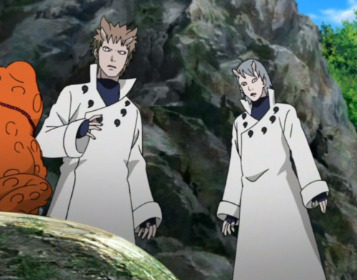

Left: Filler anime episode with both // Right: Hagoromo manga panel
Again, since we get very few manga panels related to Hagoromo and his sons, I’ll refer once again to the filler episodes where he is shown as the ruler of a village. The spot within the Heian period in which I’m placing Hagoromo would be around 100 years after the Taika reforms which established one of the first codes of law in Japan and (Taihō code) and divided the country in provinces ruled by feudal lords. Curiously, around the time where the Taika reforms happened, there was an emperor called Tenji.
Indra and Ashura
The third generation of the alien-human hybrids is here, and I place them in the Heian period as well. My main reason to consider Indra and Ashura in the Heian period is the fact that this is the exact time period where the samurai originate. A common misconception is that a samurai is a Japanese warrior highly trained in the martial arts and weapons. While this statement holds some truth, the samurai were the military social class of feudal Japan, which means that there were people who were of the samurai class but had never touched a weapon in their lives. Therefore, samurai clans were not entirely composed by warriors but also had a number of people who lived a more “civilian” lifestyle. And you may be wondering, “what do the historical samurai have to do with the ninja that we see in Naruto?”. The answer is: more than you think. Historically speaking, the ninja is a samurai specialised in stealth and sneaking, the only difference with the Naruto universe is that the ninja we know and love from the show possess chakra and perform techniques with that.
The story of Indra and Ashura is strongly tied to the origin of ninja clans in Naruto, just as the Heian period is the origin of the samurai clans. From this time period I’d like to highlight the myth of Minamoto no Yorimitsu, more commonly known as Minamoto no Raiko. His story says that he slayed demons (yes, really) and saved many maidens from being abused by drunk oni with his great sword, Dojigiri Yasutsuna. The difference between myth and legend is that myths hold some kind of historical fact whereas legends are purely fictional. Minamoto no Raiko has been heavily mythified and his story sounds unbelievable or too much like a fantasy story until you realise that he did exist and that his sword is kept in a museum. Doesn’t this resemble how the origins of ninja in Naruto are almost like fantasy stories up until Hagoromo shows up in the 4th war and explains that everything was real all along?

Above: Ukiyo-e of Minamoto no Raiko and others fighting the demon Shuten Doji.
Just as Minamoto no Raiko is considered the first samurai, Indra could be considered the first shinobi. He was the first to channel and shape chakra to create jutsu, and he was considered as part of the legends surrounding Hagoromo. Please compare these two panel sequences, one is from earlier in the story and the second one is Hagoromo’s version.
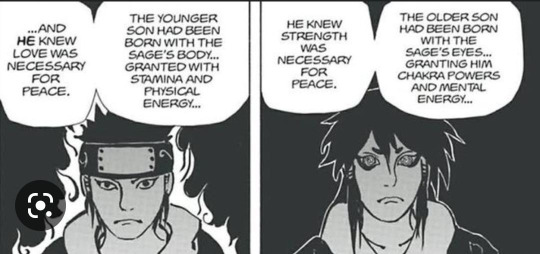

The brothers’ character design can also be correlated with the Heian period. Indra’s eyebrows seem to be real but resemble the hikimayu design of Kaguya’s eyebrows, however he does add eye makeup. The people who wore makeup in the Heian period were nobles (mostly noblewomen), once again reinforcing my point that this family started out as feudal lords and eventually fused with the warrior class, becoming ninja clans. Although the character design for Indra and Ashura isn’t 100% equal to Heian Japan’s male clothing, the inspiration is subtle yet visible. I’d say that the inspiration is mostly for the plot rather than the appearance of the character. If you’d like to see more real Heian period clothing, this link has recreations of the outfits of the characters in the Tale of Genji, by Murasaki Shikibu.
Sources
These are some useful links that I’ve referred to while writing this post. I’d like to invite you to read them if you’d like to do further research on the beautiful history of Japan.
https://www.britannica.com/biography/Tenji
https://www.britannica.com/event/Taika-era-reforms
https://www.japanhousela.com/articles/princess-kaguya-a-tale-for-the-ages
https://en.wikipedia.org/wiki/Hikimayu#:~:text=Hiki means "pull" and mayu,from sesame or rapeseed oils.
https://www.thoughtco.com/beauty-in-heian-japan-195557
https://history.hanover.edu/hhr/22/HHR2022miller.pdf
https://www.tumblr.com/heian-collection/30869762024/beauty-ideal-in-heian-japan?source=share
https://thegate12.com/article/264
Thanks for reading! Stay tuned for part 2, the Warring States era. Special thanks to @al-hekima-madara-blog for actually motivating me to write all of this down 💜
#purple rambles#purple's historical analysis#naruto#naruto shippuden#six paths#kaguya otsutsuki#hagoromo otsutsuki#hamura otsutsuki#indra otsutsuki#otsutsuki indra#ashura otsutsuki#oh goodness this was a very long post#but it was really fun to make!
74 notes
·
View notes
Text
i think touhou kaguya should have hikimayu & black teeth
9 notes
·
View notes
Text
love how proto fem jax has hikimayu (rich bitch) eyebrows. i will use this design quirk to fuel my "jax is a nepo baby" headcanon. thank you gooseworx.
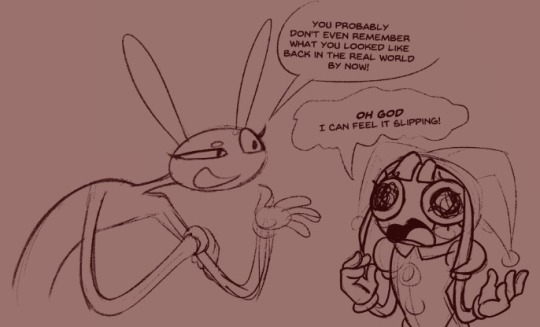
#tadc jax#tadc#headcanon#you will pry this vague idea from my cold dead hands#man who has never worked a day in his life forced to endure digital torment nexus where he has to do menial labor for literal NPCs#<- peak comedy (according to me)#chatter.txt
4 notes
·
View notes
Text
Heian-Period Makeup Lookbook
Get all dolled up for court with Lady Mukugetsubo, inspired by this post by Sunpi and this article on Heian-period makeup by a reenactor, as well as this post on Heian-period court outfits by another reenactor.
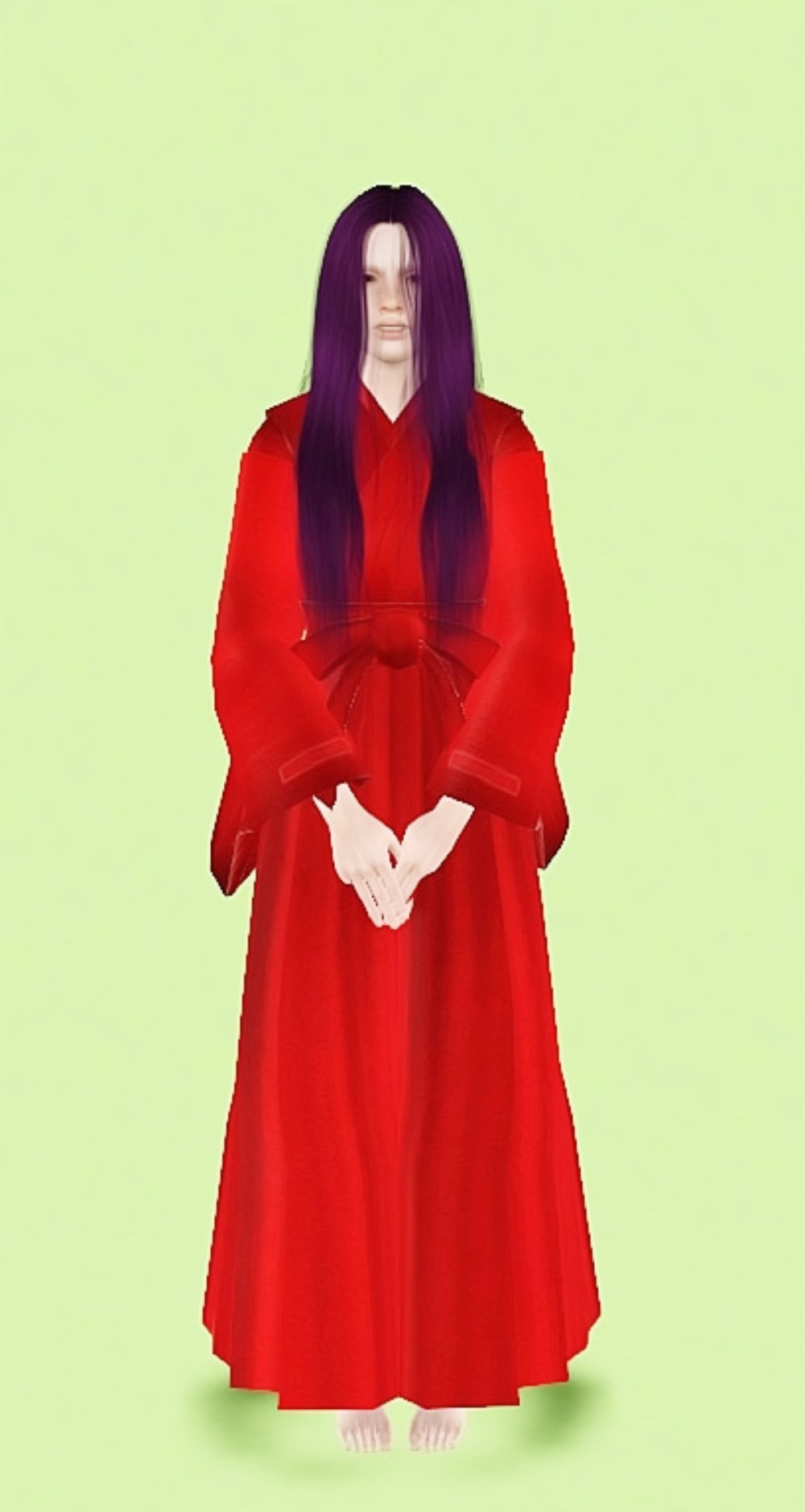
At the moment, she’s looking a little less than ready--she’s still in her underpants and her hair’s in her face.
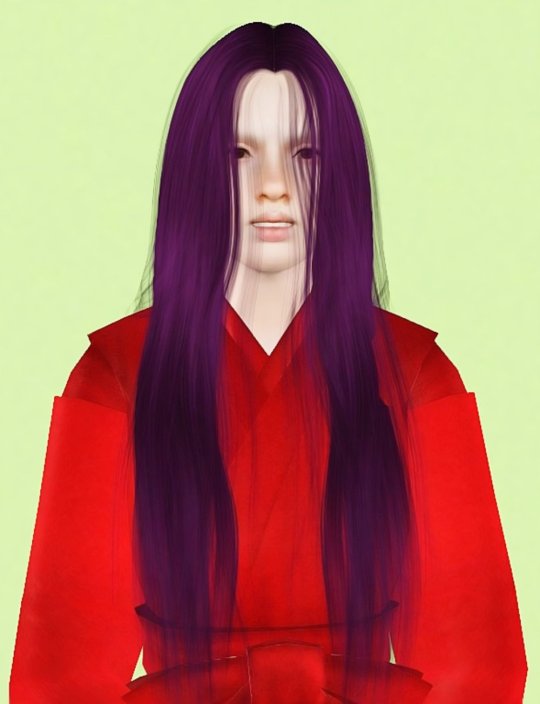
Unless the house is on fire, she’s not ready to go out at all. Let’s fix that!

First, she has her hair combed and pulled off her face.
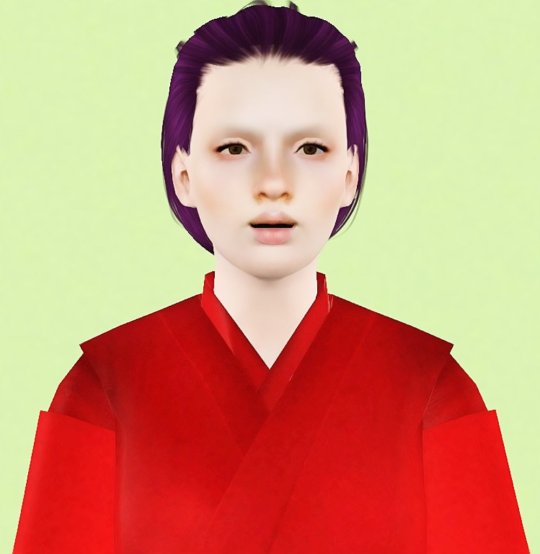
If necessary, she has her hagurome, or teeth-blackening, reapplied, and re-plucks her eyebrows. The tooth-blackening was made iron filings or oak gall, among other ingredients, and served as an early form of dental sealant.
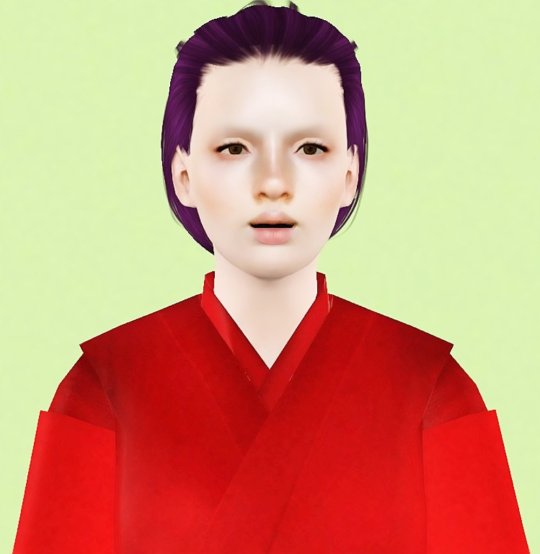
Once her eyebrows are plucked, facial wax, or bintsuke, is applied to her face and the visible portion of her neck. This serves as an early form of makeup primer.

Then, the white face paint, or oshiroi, is applied. As she’s a lady of rank, this is the “good” stuff, ugiusu no fun, made with white lead and nightingale droppings; ladies of lesser means (or queasy stomachs) used rice powder.

Next, the beni, or safflower, lip paint is put on for the classic bold red lip.

Once the lip paint is applied, melted sugar is painted over it to make it shine.
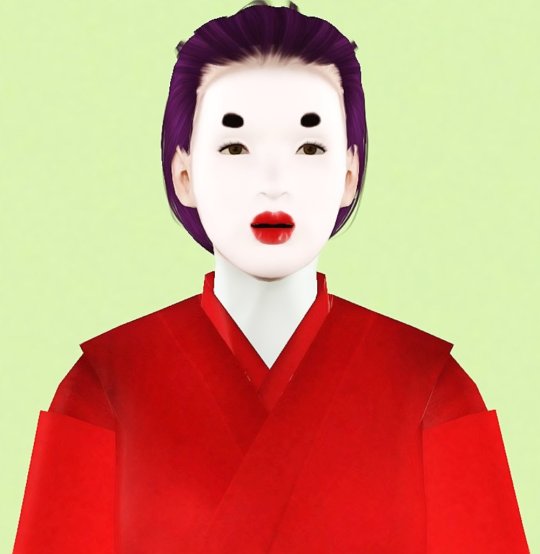
Finally, charcoal is painted halfway up her face to make the classic hikimayu eyebrows.

Now Lady Mukugetsubo can restyle her hair in the fashionable manner.

Then she can put on the many layers of uchiki sugata over her madder-dyed hakama and kosode. The uchiki sugata is the most basic court garment, with at minimum five or six uchiki layered over each other; even in the height of summer, some ladies wore as many as twelve uchiki.

Finally, she’s ready to make her appearance at court!
Add To Cart
Hakama and Kosode: Qingshuangtongzi (x)
Uncombed Hair: Ifca and Anto (x)
Off-The-Face Hair: Ifca and Anto (x)
Hagurome: (x; RGB 23,20,18)
Bintsuke: SK-Sims (x) and Ephemera (x)
Ugiusu no Fun: Alhajero (x) and Fraymyste (x)
Beni Lip Paint: Wundersims (x; RGB 195,39,43)
Melted Sugar Lip Paint: Rollorolls (x)
Hikimayu: Yenwen (x; RGB 23,20,18)
Styled Hair: Ifca and Anto (x)
Uchiki Sugata: Qingshuangtongzi (x)
Pose: Buhudain (x)
Patterns: Simhelaene (x), Peacemaker IC (x), EA
#sims 3 lookbook#sims 3 medieval#sims 3 japanese#i often wonder what i contribute to the simblr ecosystem#sims 3 historical
31 notes
·
View notes
Note
🔥 o take haver. will u share a splatoon take
even without the cultural references both to south asian culture and the hikimayu from east asian culture the forehead jokes about pearl and frye just arent. Funny like at all get a new joke <3
also off the hook is better than the squid sisters heheeee
#are they better than deep cut? to be determined#sorry i love my girls i started playing sploon at splatoon 2 so theyre my fav
5 notes
·
View notes
Text

Partially inspired by jūnihitoe clothing and Heian Period. Also hikimayu (eyebrow plucking) and moth eyebrows
0 notes
Text

Assignment name: Redressing practice
Tools: Procreate
Description: This is a woman figure redressed in Japanese Kimono.
Self-evaluative feedback: Kimono is a type of traditional Japanese clothing. Compared to similar clothing in other eastern Asian countries, the sloper/style of kimono is tighter, cinching the waistline with a broader belt. There are different styles of cuff design for Kimono, some wider and some slimmer; for this redressing practice, I drew a slimmer cuff, so it’s clearer to see the character’s figure under the folds. The shoes are Geta, a type of traditional wooden slippers with thick soles. For accessories, I drew a folded Sashigasa (paper umbrella) and a small purse. The hairstyle is called hime cut, with a short front fringe, cheek-length side-locks, and long hair at the back. This is a hairstyle usually worn by women with a higher social state in Ancient Japan and is re-popularized by modern subcultures like Lolita (dressing subculture) and Anime culture. The eyebrow makeup with two dots in the middle is called Hikimayu, an eyebrow makeup commonly utilized in Noh performances, a kind of classical Japanese dance-drama.
Link to reference board:
0 notes
Photo
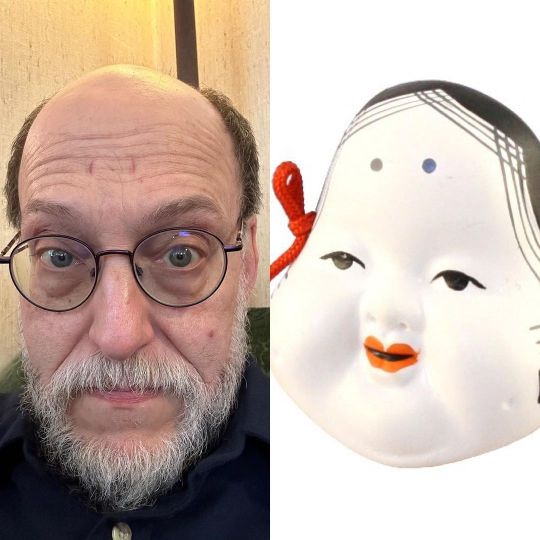
Hikimayu. In my case, caused by pushing my glasses up on my forehead for close vision. (at Portland, Oregon) https://www.instagram.com/p/Clt9eQdyIpN/?igshid=NGJjMDIxMWI=
0 notes
Text
I’ll give Mythology Fujin the Hikimayu eyebrows :>
0 notes
Photo
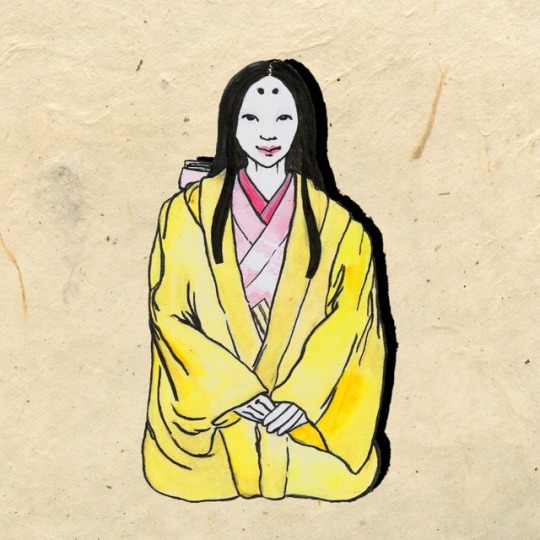
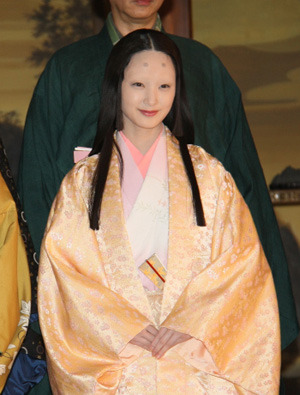
Quick drawing from today ❤︎ QUOTE: “For those who practiced Ohaguro (お歯黒 / dying teeth black), it was also common for them to shave/pluck off their eyebrows (Hikimayu / 引眉) and paint a fake set on the forehead (Tenzyou mayu / 殿上眉). Think of it as a package deal. As with Ohaguro, it started out as part of the coming of age ceremony for young noble men and women. So, why would anyone shave off their eyebrows and repaint them higher up on the forehead? It was all about political posturing. You see, not only do the eyes and mouth move and indicate certain emotions, but so do the eyebrows. For the noble class, they were very careful about what they convey to their political opponents - both verbal and facial cues. The Japanese are masters of indirect communications after all, right? And the eyebrows are located on the part of the face that moves with ones emotion. Thus, to prevent your political opponents from reading your emotions, the noble class shaved off their eyebrows. Then they painted them higher up on the temple where the skins do not move according to one emotions. Pretty crazy, eh? And just as with Ohagura, the Hikimayu & Tenzyou Mayu were later adopted by married women so they can prevent (or be seen) telegraphing their emotions to men other than their own husband… And this practiced peaked, not surprisingly, during the Edo Period - age of the floating world.” Quote source: https://www.quora.com/Why-did-Japanese-women-shave-their-eyebrows-in-the-old-days
#hikimayu#tenzyou mayu#引眉#殿上眉#japan#japanese#japanese culture#old fashion trends#ink art#watercolor#aquarelle#illustration#artwork#drawing#kimono#edo period#my art
2 notes
·
View notes
Photo

MODEL ➙ @on1ri
0 notes
Text
The Lady of the Hibiscus Pavilion (A Heian-Era Lookbook)





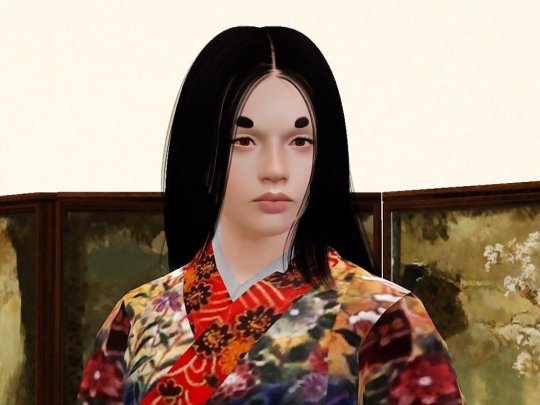
A woman of the Heian court has rolled up the sudare blinds...
C.C. Credits
Poses by Buhudain and Qingshuangtongzi | “Hitoe” by Qingshuangtongzi | Patterns by Evernever | Hair by Ifcasims and Anto | Hikimayu by YenWenz | Sudare blinds, byobu, candlestick, and palanquin by @murfeelee | Arm rest by Simnaru | Kichou by Momoka
38 notes
·
View notes
Text

goo paradise is gonna b so sexy
3 notes
·
View notes
Text
What Happened to Tengen’s Eyebrows?
(this is a shitpost)
- he was born without them.
- he shaved his eyebrows as a reference to the practice of hikimayu.
- his stylist told Uzui if he shaved them off, his eyebrows would grow back thicker. his stylist was wrong.
- he overplucked a bit. he overplucked the rest to match the overplucked bit. then, he overplucked that...one thing followed another until: no more eyebrows.
- *eyebrow loss = male pattern baldness, Flamboyant Edition™
- he donated his eyebrows to Kyojuro.
*according to Uzui.
#tengen#uzui#kny#shitpost#demon slayer#kyojuro#rengoku kyōjurō#rengoku kyojuro#rengoku kyoujurou#kyojuro rengoku#kimetsu no yaiba#kimetsu no yaiba uzui#uzui tengen#kny memes
81 notes
·
View notes